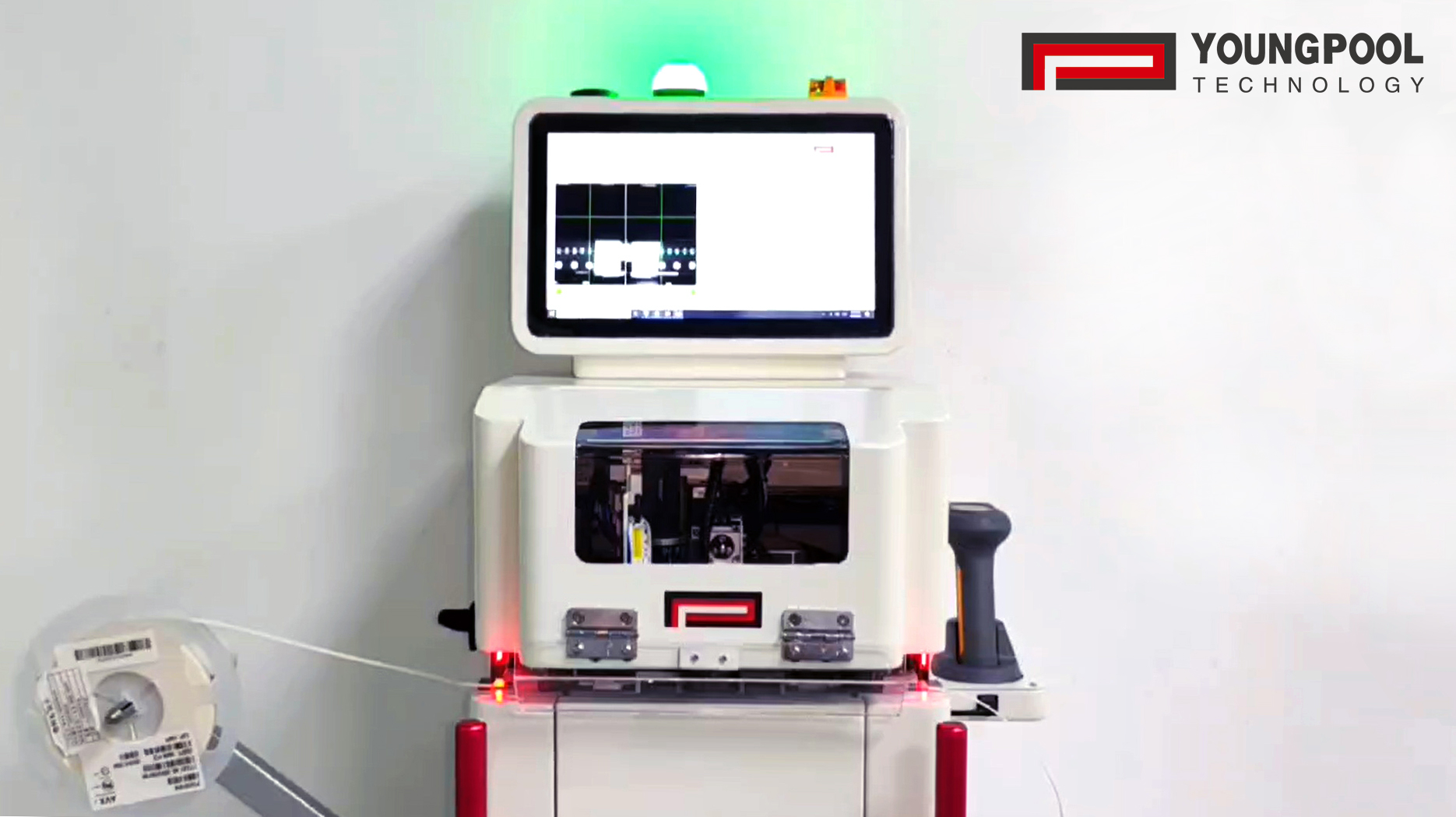Categories
New Blog
Automatic splicing design compatible with 8–24mm tape: Provides flexible support for diversified production lines
Oct 16, 2025
In the field of electronic manufacturing, the diversification of component packaging is rapidly transforming SMT production models. The coexistence of materials with different sizes and forms has made the compatibility and stability of the splicing process a critical factor affecting production line efficiency. Youngpool Technology's automatic splicing machine has been systematically optimized to address this trend—the equipment supports automatic splicing of 8, 12, 16, and 24mm wide tapes, and is compatible with both paper and plastic tapes, demonstrating excellent flexibility in mixed-production environments with multiple varieties.

According to the EIA-481 standard, 8, 12, 16, and 24mm are the most common tape widths in SMT. Traditional splicing machines often support only a single specification, requiring guide rail replacement or fixture adjustment during line changeovers, which is not only time-consuming but also increases the cost of standby equipment. Youngpool's automatic splicing machine achieves rapid switching within the 8–24mm range through programmed width control or automatic rail-changing mechanisms. Operators only need to select the tape specification in the system to automatically adjust the guide rail spacing and feeding path, significantly reducing changeover time and enhancing equipment versatility and production line flexibility.
In terms of material compatibility, this model supports both paper and plastic tapes. Paper tapes are widely used for their low cost and suitability for small passive components but are prone to deformation due to humidity. Plastic tapes offer higher stability but require more precise feeding tension and film peeling control. By optimizing pocket depth and pressing mechanisms, Youngpool Technology enables the equipment to switch between the two materials with only parameter adjustments, requiring no additional modifications while maintaining stable feeding and accurate alignment. In practical production, the machine's splicing success rate under typical working conditions can reach 98%, providing reliable support for high-volume continuous operations.
Additionally, the system is equipped with intelligent vision and automatic empty-tape detection functions, which automatically identify tape width, material, and component spacing parameters during splicing to prevent mis-splicing or missed splicing caused by incorrect settings. The vision algorithm also detects the condition of the tape ends, identifies empty sections or damaged tapes, and performs pre-cutting and correction actions automatically, effectively reducing manual intervention. For production lines that frequently switch product models, this function significantly enhances operational continuity.
The SMT industry is transitioning from single-variety mass production to multi-variety, rapid-response intelligent manufacturing. Automatic splicing machines with 8–24mm width compatibility and support for both paper and plastic materials not only improve equipment utilization but also provide electronic manufacturers with more flexible production organization methods. Through this compatibility design, Youngpool Technology has established a stable, efficient, and low-intervention splicing foundation for customers, enabling production lines to maintain high-speed operation even when faced with constantly changing material systems.